
Primary
We value the traditional Steiner School practice of having one teacher accompany the children through their Primary School years. Over this extended period the teacher and student develop a meaningful relationship that fosters an environment of trust and security within which the child can relax into their learning. Teachers really come to know each student and as such are better able to meet their individual needs and honour and support their unique learning and developmental journey. Over the years a true partnership, based on trust and mutual respect, is also able to be forged between parent and teacher so that the needs of the child is collectively served.
EPOCHS
Every class has a matching stage in the Story of Humanity and this becomes the over-arching theme or epoch for that year level. The students listen to stories from that era, which resonate with the particular challenges of the age group.
MAIN LESSON
The Main Lesson is a key point of difference in Steiner Schools. The first hour and 40 minutes of every morning are dedicated to the study of the same topic or theme for a period of around three weeks. The central theme of the Main Lesson is progressively explored through a broad spectrum of integrated activities; each day building on the previous.
Main Lesson blocks may be focused on Mathematics, Language, Humanities or Science however each will comprise a variety of experiences including movement, singing, painting, drawing, modelling, drama, narrative, practical activity and formal academic work. The students create their own Main Lesson books, which serve as a personal record and recount of their learning through drawings, words and other visual representations.
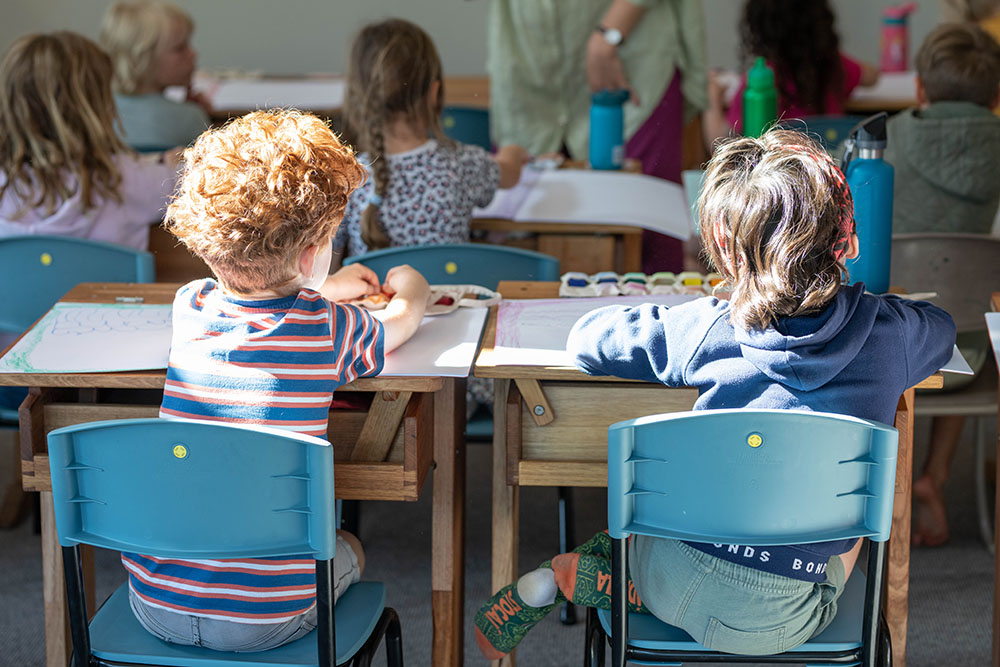
Class One
In Class One the students make the all important transition from Early Childhood to school where formal learning begins. The students are given their desk, which travels with them all the way to Class Six (altered every year at Desk Day to accommodate the growing child). The students are immersed in a rhythmic, engaging and deeply nourishing life from the moment they enter the room until the time they leave. They are individually greeted each morning and bade farewell in the afternoon, often with a riddle or question to contemplate until their return next day. Routines are established, games are played, shapes are physically explored, numbers are sung, and drawings are made. Through the telling of fairy tales the Class One teacher conveys messages of beauty, goodness and truth to the children, enriching the child’s inner life.
Class work includes: Introduction to letters, introduction to numbers, writing and word families, introduction to the four mathematical processes, traditional folk and fairy tales, music – singing and recorder, painting, crafts, nature studies, a seasonal class play, and making their first reader.
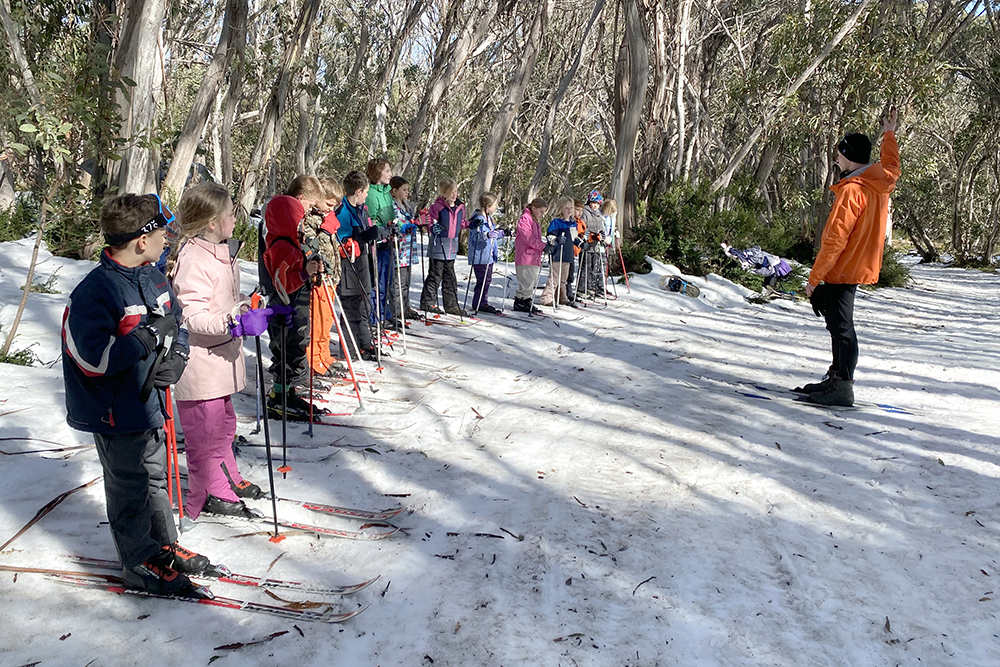
Class Two
Class Two students begin to show an awareness of the world around them, they resonate deeply with legends and fables, recognising both the everyday attributes of humans, which are shown through animal stories, and those saintly qualities that human beings can strive towards. The Celtic Myths strongly appeal to the feeling qualities of Class Two students. Themes include legends and myths based on Aesop’s Fables or Russian Fables, Celtic Wonder Tales, the Celtic Dragon Myth and The King of Ireland’s Son.
Main Lessons include:: Writing and reading, Celtic Myths, a class play, measurements using hands and feet, Indigenous stories, maths, stories of St Francis, crafts, poetry, wet on wet painting, French, singing and recorder playing.
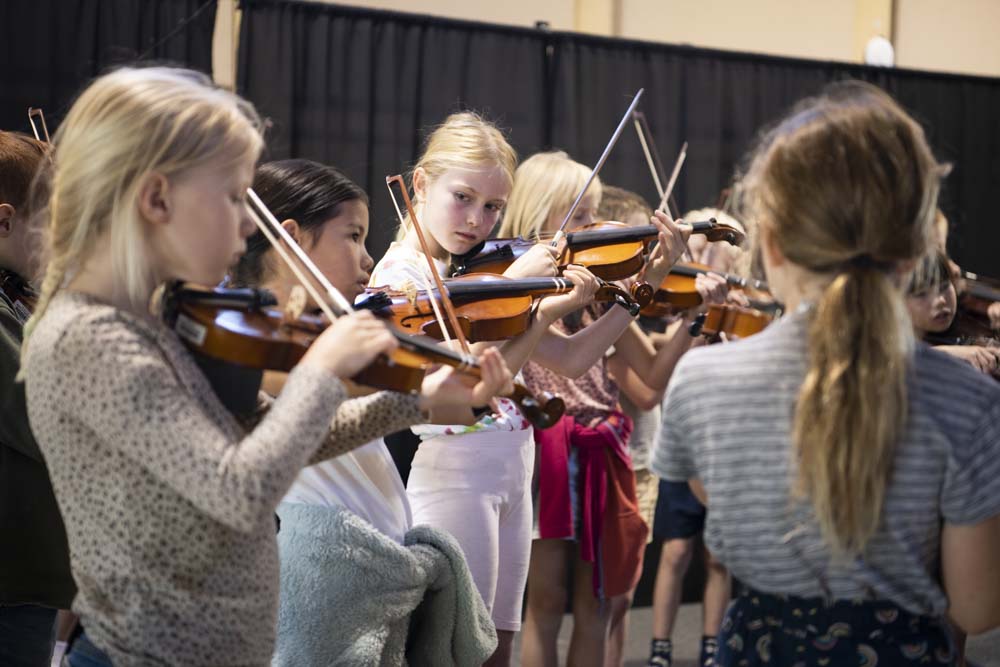
Class Three
The age of nine often brings significant developmental change. The students are developing an awareness of themselves as individuals and they may become uncertain and questioning. The curriculum has a strong focus on practical subjects such as farming, gardening and building. This is the year in which the students may build a shelter. The exploration of Old Testament and Hebrew stories provide a solid foundation from which to serve this important stage of personal development. By Class Three, students bring greater confidence and fluency to their reading and writing. Work in maths focuses on measurement and also builds skills utilising the four processes. The students are introduced to written music and start individual lessons on a stringed instrument – violin or cello. A two-night farming camp allows them to develop an awareness of food production. Craft, music, French, gardening and library continue, Bothmer gym may be introduced.
Main Lessons include:: Old testament stories, grammar/parts of speech, farming, building, crafts, writing and reading of music, French and eurythmy.
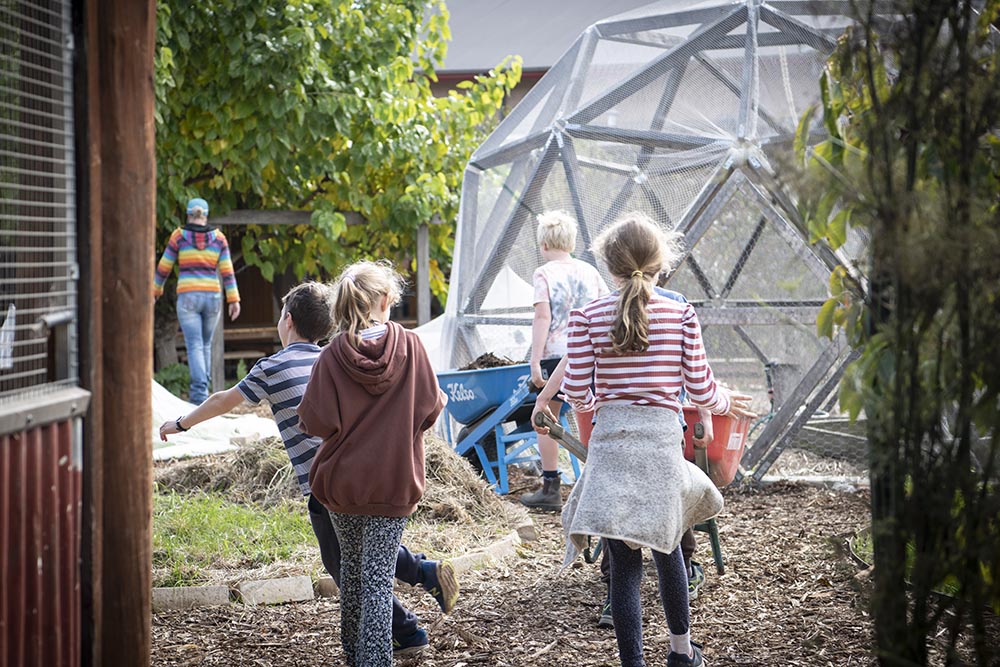
Class Four
Around the age of 10 a confidence can be observed in the child’s relationship with the world. Physical development brings a new strength and agility. The Norse Myths and legends are explored in depth because they are full of courage and valour. The students’s expanding consciousness is supported through subjects such as geography and the topic of ‘Human and Animal’. In English the students study grammar, further reading, written and oral expression, and listening skills. Maths sees an emphasis on fractions and practical work. A three-night camp is held in Class Four including a sleepover at the zoo. They also have a two-night local camp focussing on Indigenous studies. Main lessons include: Norse mythology, fractions, human and animal, Indigenous studies, history of writing, local region.
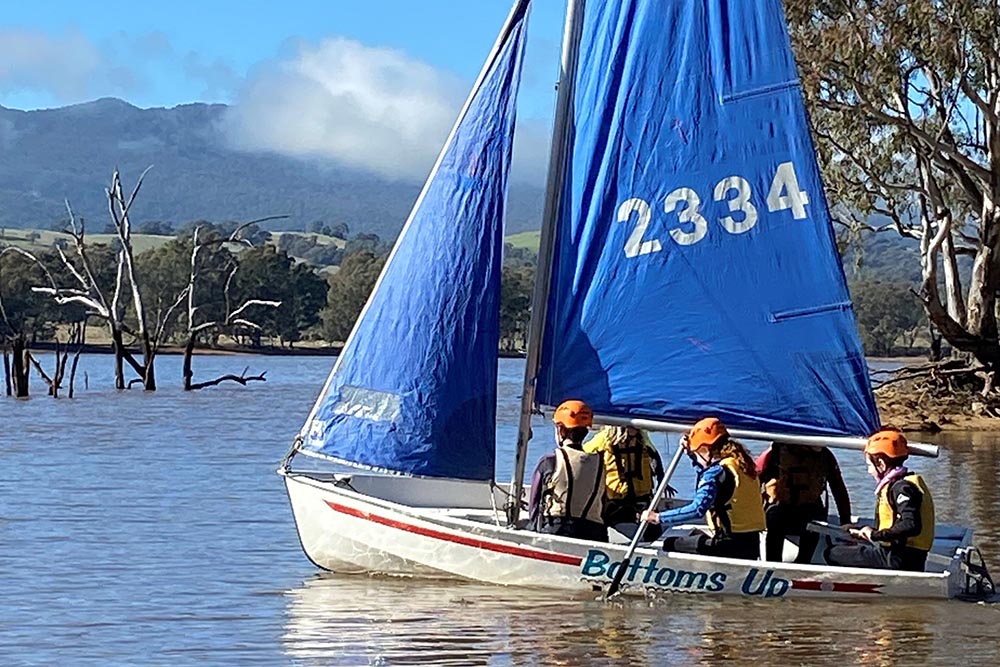
Class Five
Class Five students have an understanding of placing events in time and history. They learn about ancient peoples – in particular the myths and legends of ancient India, Babylonia, Sumeria, Persia, Egypt and Greece. In studying the development of these civilisations they gain a sense of where our history begins. The students observe the natural world, experiencing its beauty and form, pattern and number. They gain grace of movement, harmony and balance in themselves, which mirrors their deepening relationship with the world around them. Maths subjects link in with the exploration of ancient buildings, including the calculations performed in their construction and the development of number. English continues with the study of grammar, poetry, reading and creative writing. As in earlier years the students participate in Eurythmy, painting, form drawing, craft, drama and physical education. They also continue with French and music, which involves orchestra, recorder, singing and a weekly lesson on their chosen stringed instrument. Main Lessons include: Botany – the study of plants in relation to the human being and to the Earth. Geometry – laws that govern geometry and the beauty of its forms. Geography – land formation, the elements of local geography and Aboriginal stories.
